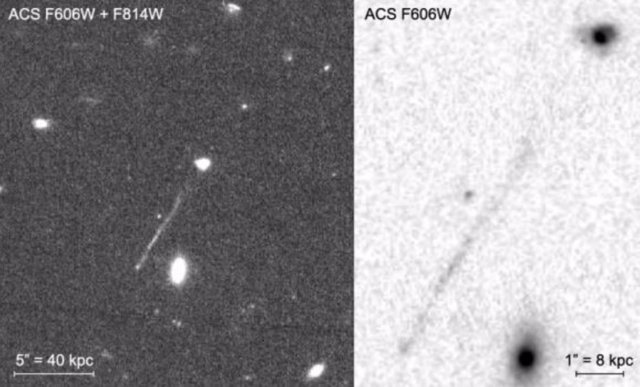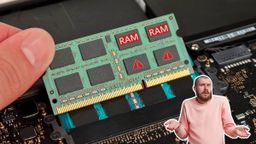17 Feb. () –
Astrophysicists present evidence of what they believe to be a runaway supermassive black hole hurtling through space and interacts with the circumgalactic medium.
In their investigation they report the serendipitous discovery of a linear feature in images from the Hubble Space Telescope’s Advanced Camera for Surveys that could be one of these contrails.
The item has been posted by arXiv and has not yet been peer reviewed. Its lead author is Pieter van Dokkum, Professor of Astronomy and Physics at Yale University, reports Universe Today.
Normally, supermassive black holes (SMBHs) get trapped in the center of galaxies, where they remain. But scientists believe that in rare circumstances they can escape. In their article, the authors explain how a supermassive black hole can be ejected from its host galaxy..
They always start when galaxies merge. This leads to the formation of a binary supermassive black hole at the center of the merger remnant. The binary can be very long-lived, surviving up to a billion years before merging. If during that time, a third supermassive black hole reaches the galactic center, then a three-body interaction can give one of the black holes a speed boost, and can be kicked out of the galaxy.
Astronomers recognize a couple of ways to identify a runaway SMBH. The easiest way is if the hole is actively absorbing material like an active galactic nucleus and can be identified by its luminosity. “For such objects,” the authors write, “the presence of an SMBH is not in doubt, but it may be difficult to determine whether they are ‘naked’ black holes or the nuclei of merging galaxies.”
Another way is by the stellar mass that drags the rogue hole with it. When an SMBH is ejected, its enormous gravitational force drags some stars with it. But without the luminosity of an AGN, the dim light makes it difficult to identify the hole and its stellar companions from a great distance.
A third way astronomers might recognize a potential SMBH is by the effect it has on the diffuse gas of the circumgalactic medium (CGM) as it passes through it.
FORTUITOUS DISCOVERY WITH THE HUBBLE TELSCOPE
“The interaction of a runaway supermassive black hole with the CGM may lead to the formation of a trail of gas in shock and young stars behind it“, the authors write. In their article, they report the fortuitous discovery of a linear characteristic in images from Hubble’s Advanced Camera for Surveys that could be one of these contrails.
When an SMBH passes through ionized hydrogen at the CGM, it produces a shock front with a long trailing trail behind it. In the wake, gas clouds can cool and form stars that look like knots. The researchers analyzed three of the linear stele knots and measured their age and metallicity.
Theory and models show that the youngest stars formed in the wake should be less than 30 million years old. When the researchers measured their properties, they verified that the three knots are within the age range established by the models. They are also within the range of metallicities and dust content.
If the host galaxy ejected an SMBH, the galaxy should show signs of disturbance. SMBHs are extraordinarily massive, and that much mass cannot move through a galaxy without shaping it. The team examined the galaxy that generated the SMBH and found that its morphology was altered.
However, there is another possible explanation for the linear trait. It could be a black hole jet instead of a rogue SMBH. Under the right conditions, black hole jets can also cause gas shocks at the CGM and lead to star formation.. “There are two well-studied nearby examples of jets triggering star formation,” the authors state. One of them is the so-called Minkowski Object.
The authors acknowledge that the black hole jet explanation is a possibility, but say it has too many problems.. Visible emission lines are not a property of black hole jets, and there is no evidence of nuclear activity. There is also a problem with morphology. “A more serious problem is that the morphology of the feature does not match simulations or observations of jet-induced star formation,” the authors explain.
They favor an out-of-control SMBH as the best explanation for the data and observations..
“The proportions of the lines, the colors and the general morphology are consistent with an ejected SMBH traveling at high speed through the CGM and triggers star formation“, they write.














